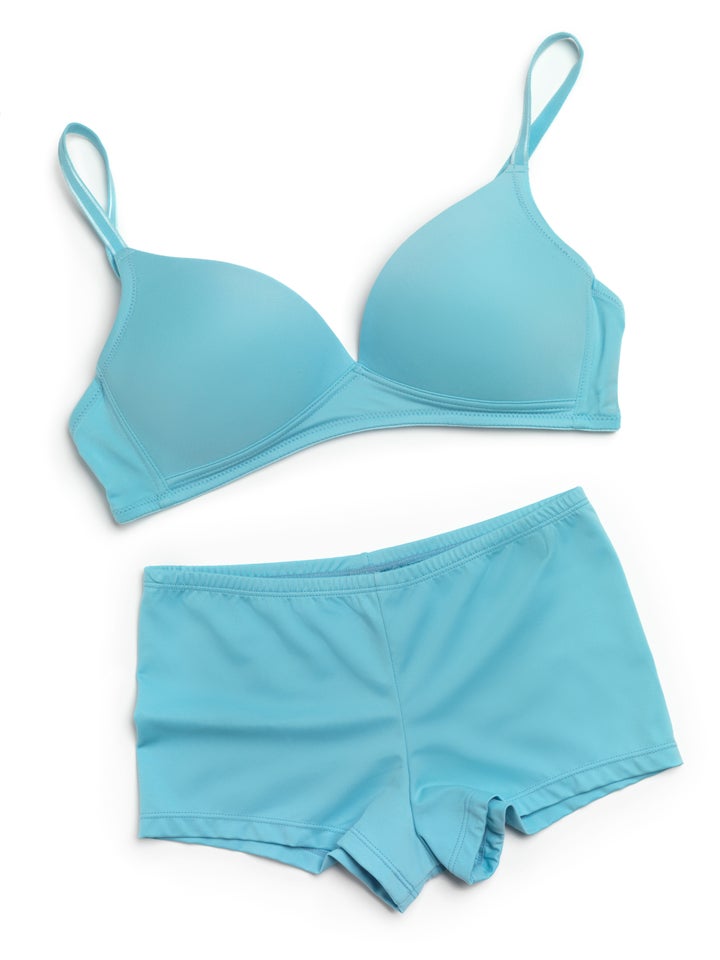
In April of 2010 there was a controversy raging over an ad run on TV by Lane Bryant showing a beautiful model in very sexy lingerie. The model, Ashley Graham, was far from the first women to wear a bra and underpants on TV. Certainly Victoria's Secret shows the same amount of body area in their ads. The only difference? Ashley is a plus size model.
The lacy bra Ashley was wearing showed the same amount of cleavage as models in Victoria Secret ads promoting add-a-cup push-up bras -- not a big difference in what the French call "décolletage." The only true difference I could see was that the panties of your typical Victoria's Secret model are cut lower than what Ms. Graham wore.
But obviously the fuller-figured Ms. Graham, in her lingerie, presented a dilemma to the "those in charge." The networks said they would only run the Lane Bryant ads after 9 pm at night even though it was standard to see commercials for Victoria's Secret (featuring thinner models in similarly skimpy attire) in earlier time slots. Graham commented at the time that when
"We (women) have a little bit of extra, you know, overflowing, everybody freaks out."
But while the Victoria's Secrets ads -- not to mention the company's annual primetime fashion show -- seem to be accepted by the media, the Lane Bryant ad wasn't. It was considered too risqué, too sexual in tone. Why? Because the lovely Ms. Graham is voluptuous and some people saw that as a problem, as in way too sexy for TV despite the definite sexual air provided in other lingerie ads.
Others, however, viewed it as outright weight discrimination.
Fast forward to 2011 and the new fashion craze, leggings and tunics; women are wearing them everywhere, even to work. Now it seems that these trendy outfits may be a discrimination issue brewing for some women, those who are called voluptuous.
"We have a dress code at my office; neatness and dressing professionally is the key. Women have been wearing leggings, tunics and boots this year and it was all acceptable. It is a very trendy, professional way to look," said my friend Samantha who is curvy and a healthy weight for her height of 5'6."
But when I came in one day wearing black leggings and a blue tunic I was called in by my manager late in the afternoon and told that I was dressed improperly. I didn't back down, I asked her what she meant. About twenty women in my office were wearing leggings and tunics, including a very attractive woman in her late fifties. Quite frankly, we were all wearing a variation of the same type of outfit including heeled boots. What was different about me?
The office manager told Samantha that the problem was that the outfit she was wearing showed her curves a "bit too much." Samantha was incensed and told the manager that she didn't understand why she was being singled out. Were the other women also being told not to wear leggings and tunics? The office manager said no and, trying to placate Samantha, went on to say that outfits that accentuate the figure aren't for "certain women." It just looked, well, too sexy and vulgar in a way, she said, the way the material clung to a woman of Samantha's build. The manager advised my friend against dressing in tunic and leggings. She smiled and bade Samantha goodnight, assuming the issue was over.
My friend is not someone to be put off easily, especially when she feels something is unfair and unjust. She was angry enough to take the issue to human resources, (who said they really couldn't do anything), and then to insist on a private meeting with the director of personnel. The director listened intently to her complaint and agreed with Samantha that there was nothing wrong with her outfit but a lot wrong with what her manager had said. He would definitely speak to her about it and tell her how inappropriate her remarks were. He assured my friend it would not be tolerated.
Samantha told me she felt that she had scored a small victory for women. After doing research for this article I'd say there are still more battles to be won. Here are some facts to ponder.
-Today's clothing mannequins have a hip measurement of 30-31 inches. In contrast the average woman's hips measure 37 inches. If today's mannequins were actual human women, based on their theoretical body fat percentages, they would probably cease to menstruate. The clothes on these mannequins are size 2 and under.
-50 percent of women wear size 14 or larger, but most standard clothing outlets cater to sizes 10 or smaller.
-Illustrating how fuller women are viewed is a Catch-21. They're seen as both sexy and overweight. Model Elizabeth Hurley stated in an interview that "I've always thought Marilyn Monroe looked fabulous in clothes and she was sexy, but I'd kill myself if I was that fat."
-Fat? She was 5'5" and weighed 134 pounds. Hardly fat.
-When a group of 20 men and women were asked to name five current well-dressed female television news personalities who are fuller and curvier, fewer than 1/3 could do so yet almost all could name the thin or very thin ones.
Whether modeling lingerie or dressing in a similar manner to what others in the workplace are wearing, a woman should not be discriminated against because she has "bit more to show." If the fullness of a normal woman's body is considered too sexy by some people who are in charge, network or employer, then we have a problem.
The name of the problem is weight discrimination no matter how the issue is soft-pedaled or worded.
© 2011 Copyright Kristen Houghton
Kristen Houghton is the author of the hilarious new book, No Woman Diets Alone - There's Always a Man Behind Her Eating a Doughnut in the top 10 hot new releases at Amazon
available now on Kindle, Nook, and all e-book venues.
To read more from Kristen Houghton, peruse her articles at You may email her at kch@kristenhoughton.com. She is also the author of "And Then I'll Be Happy! Stop Sabotaging Your Happiness and Put Your Own Life First" ranked in the top 100 books by Tower Books.com
